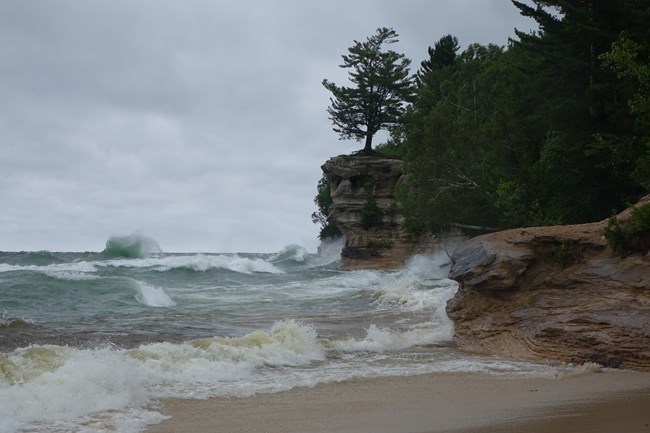Weather and Climate
Lake Superior greatly moderates temperature extremes, preventing deep cold during most of the winter, slowing spring warming, and keeping summers somewhat cooler overall. Winter months average high temperatures of about 25°F (-4°C) and summer months average about 70°F (22°C).
The average date of the last freezing temperature in spring is June 8, and the average first fall freeze is September 23; however, freezing can occur during any month. The freeze-free period, or growing season, averages 107 days annually.
This area is the second-most cloudy region of the United States, characterized by an annual mean cloud cover of 70 percent. Much of the cloudiness occurs in autumn and winter, when cool air picks up moisture from the open waters of Lake Superior (which is often warmer than the air at that time of year), rises near the shore, and forms clouds.
The prevailing wind is from the west, with average velocities ranging from 7 to 9 miles per hour, although winds coming off Lake Superior are usually higher. In summer, shore temperatures can vary dramatically throughout the day when northwest winds (off the cool lake) switch back and forth with southwest winds (off the warm land).
The big lake's presence also increases precipitation at the lakeshore. Annual precipitation averages 31 inches; annual average snowfall ranges from 140 to 160 inches with some years over 200 inches. Snow generally covers the ground from late November through late April. Fog can happen in any season.
While individual years vary, climate forecasts for this area predict slowly rising average temperatures of both air and water in summer and winter, as well as higher precipitation levels overall. Increasing temperatures in summer may result in more days of heat, humidity and chance of thunderstorms. Powerful storms can occur anytime, particularly when squall lines and fronts pass through. Visitors should be prepared for constantly changing weather conditions. Weather forecasts are displayed at park visitor centers.


